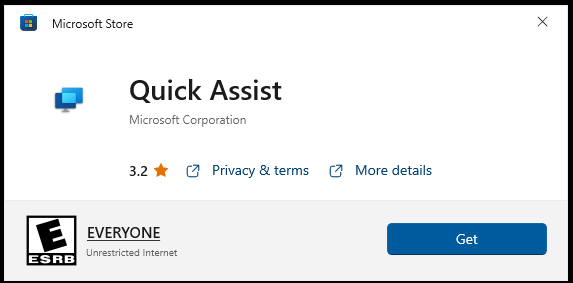
dism /online /cleanup-image /restorehealth must be run prior to running /scannow

restorehealth and /scannow are two sides of the same coin and must be run in the proper orderġ.

Quick Assist can then be launched via the Start Menu or by using its dedicated keyboard shortcut Ctrl-Windows-Q.

The new version will replace the classic version of Quick Assist, which can't be run anymore anyway, on the target system. Microsoft released a new Windows 10 version 22H2 build and a new Windows 11 build to the Release Preview Insider channel this week these builds add the new Microsoft Store Quick Assist application as a native app back in the operating system. The latter required additional assistance to get the new version of the application on the user's device. First, that the installation of the new Quick Assist required administrative privileges, and second, that one could not be sure anymore if Quick Assist was available on a user device.

Two main points of criticism were leveled at Microsoft. Microsoft explained back then that the new application would enable it to patch security issues and other issues more quickly in the future.Īdministrators were not too happy with the change. Windows users who attempt to launch Quick Assist on their devices right now get a prompt stating that there is a new version available on the Microsoft Store. Microsoft decided to retire Quick Assist and replace it with a new Microsoft Store version.


 0 kommentar(er)
0 kommentar(er)
